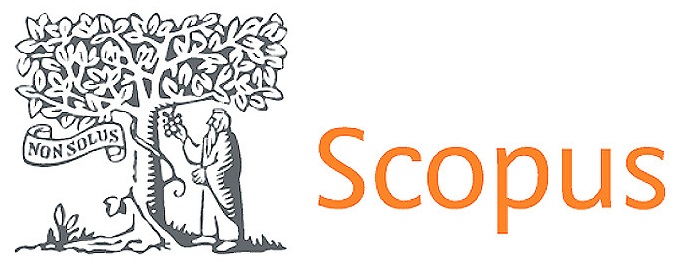Use of Convolutional Neural Networks (CNN) to recognize the quality of oranges in Peru by 2023
DOI:
https://doi.org/10.56294/dm2023175Keywords:
Convolutional Neural Networks, Artificial Intelligence, Fruit, PICOAbstract
Introduction: the agricultural sector in Peru has witnessed a notable increase in the production of oranges, which has promoted the essential use of convolutional neural networks (CNN). The ability to interpret images by visual artificial intelligence has been fundamental for the analysis and processing of these images, especially in the detection and classification of fruits, standing out in the specific case of oranges.
Objective: conduct a systematic literature review (RSL) to evaluate the neural networks used in the classification of oranges in Peru.
Method: an RSL was carried out using the PICO strategy to search the Scopus database. The selection criteria included studies that used convolutional neural networks to classify the quality status of oranges in the Peruvian context.
Results: all the studies reviewed were based on the use of convolutional neural networks (CNN) for fruit classification, using various architectures and techniques. Some studies focused on a single specific fruit, while others addressed the classification of multiple types of fruits, highlighting the importance of the number and variety of images for training the networks.
Conclusions: convolutional neural networks show effectiveness in orange classification, but the quality of the images and the variety of data are essential to improve accuracy
References
1. Muñoz Villalobos IA, Bolt A. Diseño y desarrollo de aplicación móvil para la clasificación de flora nativa chilena utilizando redes neuronales convolucionales. RIAI - Revista Iberoamericana de Automatica e Informatica Industrial [Internet]. 2017 Jan 1; 14(1):104–14. Available from: https://revistas.ufpr.br/atoz/article/view/81419
2. Leelavathy B, Sri Datta YSS, Rachana YS. Quality Assessment of Orange Fruit Images Using Convolutional Neural Networks. Springer eBooks [Internet]. 2020; 56:403–12. Available from: https://www.scinapse.io/papers/3115286542
3. Coa YMF, Crisostomo NWF, Díaz-Barriga GE. Desarrollo económico sostenible bajo un régimen social sin preceptos éticos y morales: auditoría forense en contraposición de la corrupción. Revista Científica Empresarial Debe-Haber 2023;1:48-62
4. Trieu NM, Thinh NT. A Study of Combining KNN and ANN for Classifying Dragon Fruits Automatically. Journal of Image and Graphics(United Kingdom) [Internet]. 2022 Mar 1; 10(1):28–35. Available from: https://www.researchgate.net/publication/358940623_A_Study_of_Combining_KNN_and_ANN_for_Classifying_Dragon_Fruits_Automatically
5. Gonzalez-Argote J. Analyzing the Trends and Impact of Health Policy Research: A Bibliometric Study. Health Leadership and Quality of Life 2023;2:28-28. https://doi.org/10.56294/hl202328
6. Gutiérrez VF. La estructura organizacional del Gobierno Regional de Moquegua y su eficiencia funcional. Sincretismo 2021;2
7. Sumari P, Wan Ahmad WMA, Hadi F, Mazlan M, Liyana NA, Bello RW, et al. A Precision Agricultural Application: Manggis Fruit Classification Using Hybrid Deep Learning. Revue d’Intelligence Artificielle [Internet]. 2021 Oct 1; 35(5):375–81. Available from: https://www.iieta.org/journals/ria/paper/10.18280/ria.350503
8. Gonzalez-Argote J. Patterns in Leadership and Management Research: A Bibliometric Review. Health Leadership and Quality of Life 2022;1:10-10. https://doi.org/10.56294/hl202210
9. Nasir IM, Bibi A, Shah JH, Khan MA, Sharif M, Iqbal K, et al. Deep Learning-Based Classification of Fruit Diseases: An Application for Precision Agriculture. Computers, Materials & Continua [Internet]. 2020 Nov 26; 66(2):1949–62. Available from: https://www.techscience.com/cmc/v66n2/40656/html
10. Castillo-Gonzalez W. Charting the Field of Human Factors and Ergonomics: A Bibliometric Exploration. Health Leadership and Quality of Life 2022;1:6-6. https://doi.org/10.56294/hl20226
11. Siddiqi R. Fruit-classification model resilience under adversarial attack. SN Appl Sci [Internet]. 2022 Jan 1; 4(1):1–22. Available from: https://link.springer.com/article/10.1007/s42452-021-04917-6
12. Katarzyna R, Paweł M. A Vision-Based Method Utilizing Deep Convolutional Neural Networks for Fruit Variety Classification in Uncertainty Conditions of Retail Sales. Applied Sciences 2019 [Internet]. 2019 Sep 22; 9(19):3971–88. Available from: https://www.mdpi.com/2076-3417/9/19/3971/htm
13. Auza-Santiváñez JC, Díaz JAC, Cruz OAV, Robles-Nina SM, Escalante CS, Huanca BA. mHealth in health systems: barriers to implementation. Health Leadership and Quality of Life 2022;1:7-7. https://doi.org/10.56294/hl20227
14. Fu Y, Nguyen M, Yan WQ. Grading Methods for Fruit Freshness Based on Deep Learning. SN Comput Sci [Internet]. 2022 Jul 1; 3(4):1–
13. Available from: https://link.springer.com/article/10.1007/s42979-022-01152-7
15. Murillo-Ticona TA, Berneso-Soto ML. Los Entornos Virtuales de Aprendizaje al rescate del servicio educativo. Sincretismo 2020;1
16. Azadnia R, Fouladi S, Jahanbakhshi A. Intelligent detection and waste control of hawthorn fruit based on ripening level using machine vision system and deep learning techniques. Results in Engineering [Internet]. 2023 Mar 1; 17(100891):1–13. Available from: https://www.sciencedirect.com/science/article/pii/S259012302300018X
17. Uman JMM, Arias LVC, Romero-Carazas R. Factores que dificultan la graduación: El caso de la carrera profesional de contabilidad en las universidades peruanas. Revista Científica Empresarial Debe-Haber 2023;1:58-74
18. Mohd Ali M, Hashim N, Abd Aziz S, Lasekan O. Utilisation of Deep Learning with Multimodal Data Fusion for Determination of Pineapple Quality Using Thermal Imaging. Agronomy [Internet]. 2023 Jan 30; 13(2):401–14. Available from: https://www.mdpi.com/2073-4395/13/2/401/htm
Published
Issue
Section
License
Copyright (c) 2023 Franklin Moza Villalobos, Juan Natividad Villanueva, Brian Meneses Claudio (Author)

This work is licensed under a Creative Commons Attribution 4.0 International License.
The article is distributed under the Creative Commons Attribution 4.0 License. Unless otherwise stated, associated published material is distributed under the same licence.



